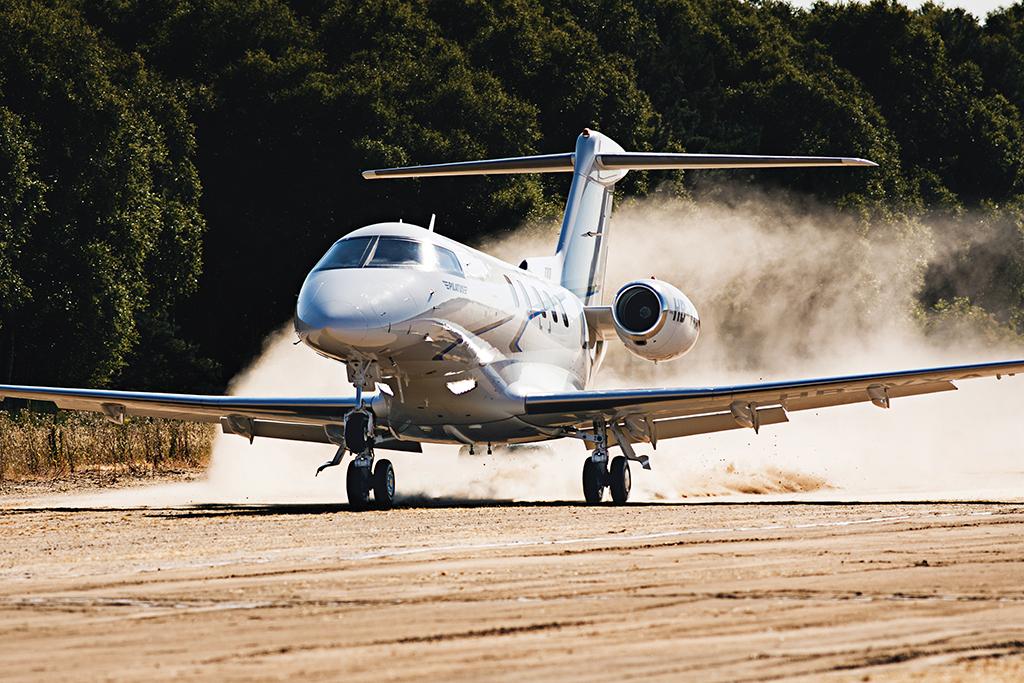
There are more than 80 Pilatus PC-24s now in service and operators say the twinjet is an ideal step up from the Swiss manufacturer’s popular PC-12 single-engine turboprop. Compared to that sibling, the jet flies 50% faster, 50% higher and offers 50% more cabin volume. The PC-24 is the only current-production business jet that is purpose-built for combination passenger and freight missions, having both a 17-sq.-ft. cargo door and approval for unimproved runway operations. It’s positioned as a light jet, but it offers a midsize cabin with a flat floor. Operators say it has no direct competitors.
The Embraer Phenom 300E, Bombardier Learjet 75 Liberty and Cessna Citation CJ4 are three closely priced rivals. The three have higher cruise speeds and greater tanks-full payloads. But the PC-24 boasts better runway performance, lower V speeds, greater cabin volume and larger baggage capacity. And its quick-change interior enables operators to configure the cabin for 4four, six or eight passengers, as needed, to accommodate 90-200 cu. ft. of cargo.
Australia’s Royal Flying Doctor Service (RFDS) has its PC-24s configured as “emergency wards in the skies,” complete with three litters and seats for four doctors and nurses. The RFDS says its three PC-24s can slash aeromedical transport times by nearly half, compared to its single- and twin-engine turboprops.
The PC-24 has proven popular with the two biggest PC-12 fleet operators. PlaneSense, the fractional ownership operation based in Portsmouth, New Hampshire, took delivery of the first production aircraft in February 2018. JetFly Aviation SA, a charter operator and management company in Leudelange, Luxembourg, launched the aircraft in Europe a few months later.
“The PC-24 is a special value proposition,” says George Antoniadis, CEO and president of PlaneSense, which now operates six of the Pilatus jets. “It’s a light jet, but the cabin is a lot more than that [size].” He adds that its runway performance puts it into a class of its own as it’s able to use 392 more airports in PlaneSense’s operating area than competitive light jets. It’s one of the few jets that can operate out of Staniel Cay, Bahamas, with its 3,030-ft. runway, Chatham Municipal in Massachusetts (3,001-ft. runway) and Banner Elk, North Carolina (3,468-ft. elevation, 4,600-ft. runway). When departing such airports, the PC-24 can fly more than 1,000 nm.
JetFly CEO Cédric Lescop also lauds the aircraft’s short-field performance, saying he can fly clients between Paris Le Bourget and La Mole (3,514-ft. runway), the airport nearest St. Tropez, France. He also says he’s able to use the grass strips at Goodwood Airport (EGHR), West Sussex, England. The famous British aerodrome is in the middle of the vintage Goodwood automobile racetrack and a 5-min. drive from the polo matches at Goodwood Racecourse.
Antoniadis notes the PC-24 has more modern design features than its competitors, including standard Honeywell Laseref VI IRS, an FMS that uses both GPS and DME for position sensing, a main engine Quiet Power Mode (QPM) that provides APU-like ground power and a utility management system that integrates control and monitoring of aircraft systems through the avionics system. The QPM provides ample power for both electrical heat and the electrically powered vapor-cycle system air-conditioner, thus providing APU-like functionality.
“It just punches every other OEM in the face,” says Scott Marshall, who flies serial number 0103, based mainly in Boise, Idaho.
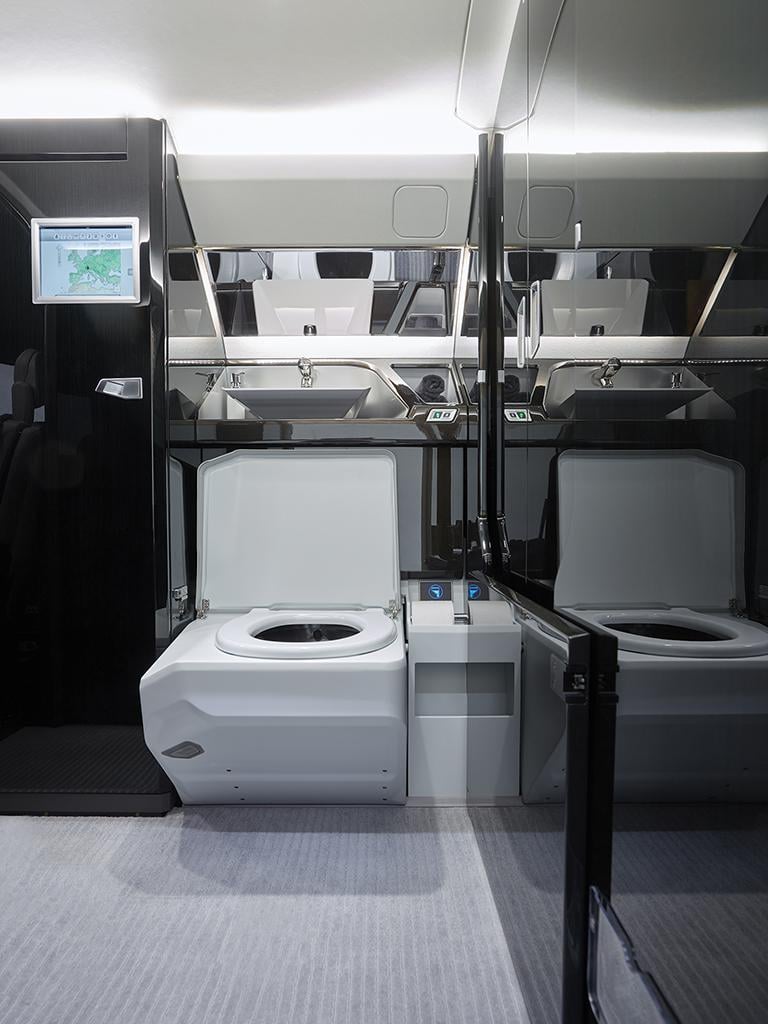
Overcoming Teething Pains
Pilatus R&D chief Bruno Cervia endeavored to perfect the aircraft before the first deliveries, but as with most clean-sheet designs, there have been some snags. Pilatus worked with Swiss firm Mecaplex to develop new-generation, lighter weight, glass-faced, stretched acrylic transparencies for the windshields and cockpit side windows. Corning supplies Mecaplex with its ultra-thin and tough-tempered “Gorilla Glass” for the outer windshield plies.
But several operators report cracking or crazing of the Gorilla Glass outer layer that requires windshield replacement. They say that it takes 24 hr. to remove and replace the windshield and that some aircraft have had multiple replacements. A series of upgrades to the assembly and coating processes have yet to solve the problem, so Pilatus now is eying other vendors to provide a more permanent solution.
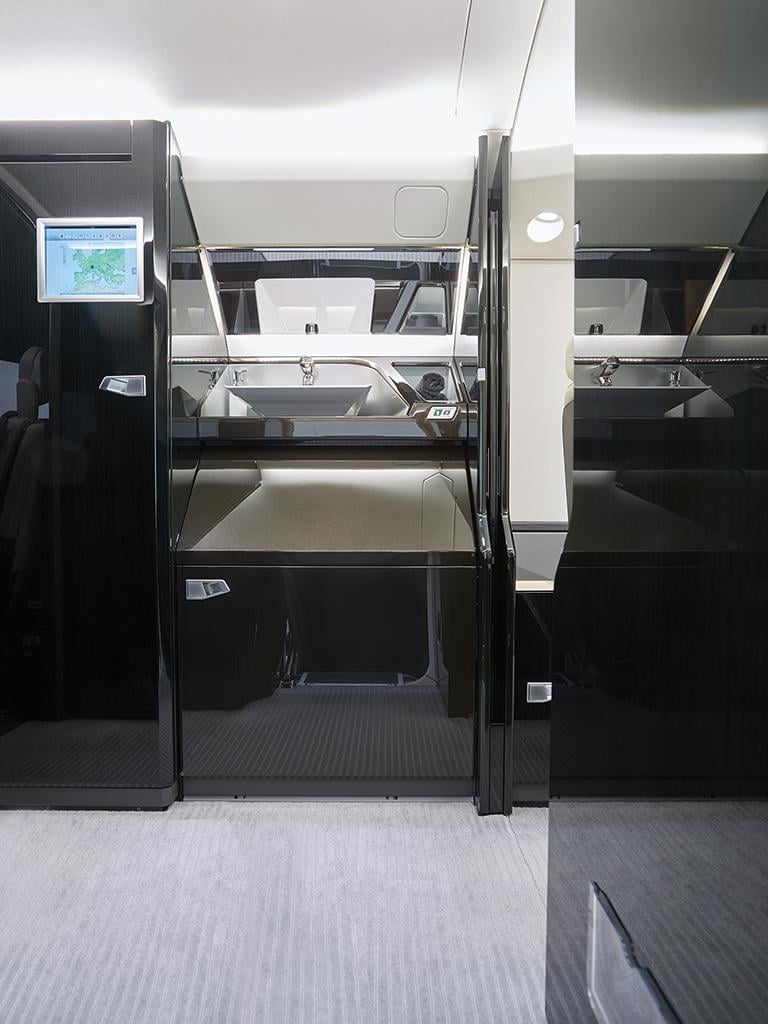
Some operators report that the hydraulic power pack, used for the anti-skid brakes, is problematic. A sticky valve in the brake fluid reservoir can cause loss of fluid and/or cause the pump motor to run excessively long, leading to premature wear or failure. A Service Bulletin addresses this issue and apparently has solved the problem.
A few serial numbers have required wire bundle repairs, an upgrade that can keep an aircraft grounded for up to two weeks. Some early aircraft also were delivered with defective NiCad batteries that needed replacement under warranty.
Most of the afflicted aircraft are early serial numbers. Pilatus bundled several Service Bulletins into the Big Aircraft Modification (BAM) program, including: (1) SB42-004, a major software update for the advanced cockpit environment with avionics powered by Honeywell; (2) SB24-001, which upgrades the software for the four electrical power distribution units; (3) SB42-006, which enhances the electronic checklist function; (4) SB45-002, which upgrades the loadable diagnostic information database interface; (5) SB42-005, which updates the utility management system software to Build 7.2; (6) SB21-003, which provides more cooling air to the avionics rack behind the copilot; (7) SB32-004, which checks the nose gear for excessive free play; and (8) SB21-004, which improves moisture sealing of the environmental control system.
A few pilots remarked that SB21-003 reduces cooling air flow to the flight deck while improving ventilation to the avionics rack. The result is an uncomfortably warm flight deck on hot days. And many operators say the passenger seats in early aircraft are uncomfortable, armrests wobble and the seats don’t track or swivel properly. Pilatus has developed Service Bulletins to remedy those issues.
Some operators also said the adhesives used to attach upholstered panels get soft in warm weather and that fit and finish of interior bits and pieces werenot up to the standards set by the Phenom 300 or Citation CJ4. However, newer aircraft destined for the North American market are being completed at Pilatus Business Aircraft Ltd. in Broomfield, Colorado, and are much improved, operators say.
Starting at s.n. 0131, Pilatus wrapped all these Service Bulletins and many production line upgrades into a block point production change. Aircraft delivered after mid-2019 appear to more reliable. However, until Pilatus solves the PC-24’s chronic windshield cracking problems, it’s likely to be an ongoing issue.
On balance, though, the PC-24 has proved to be remarkably reliable, considering that it incorporates some of the most advanced design features of any aircraft in its class. It’s the only business jet to feature brushless AC starter/generators, plus electrically actuated multifunction spoilers, distributive data processing and electrical power architectures. It’s also one of the few aircraft in its class to feature a fully interactive electronic checklist that ties into system synoptic diagrams and sensors and autothrottles.
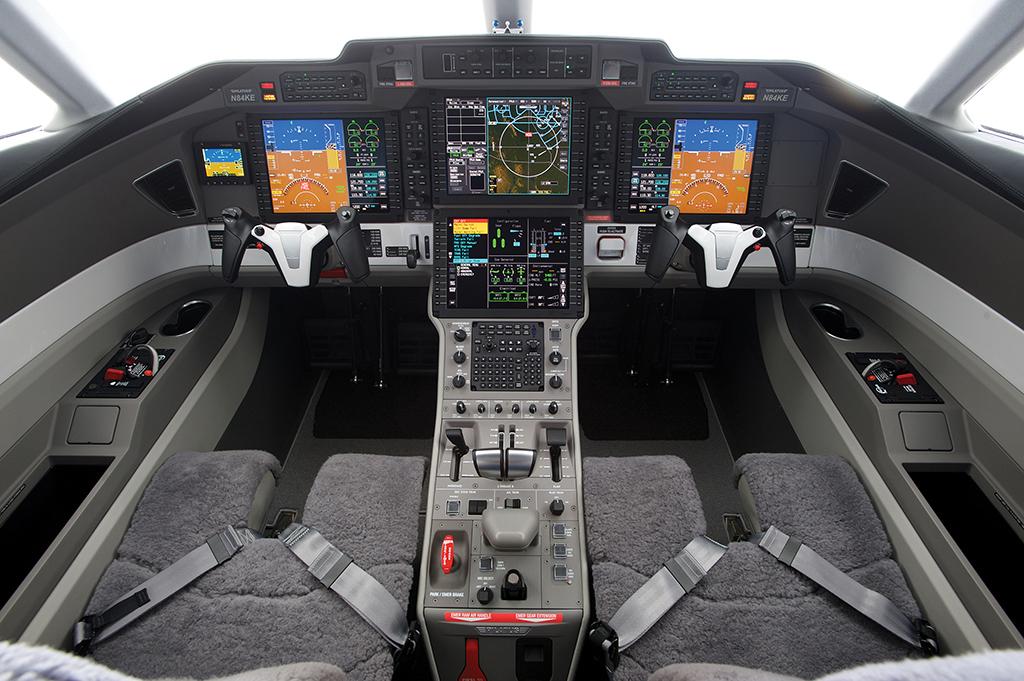
Operator Demographics
Almost half of the PC-24 fleet is based in the U.S. PlaneSense in New Hampshire is the largest single fleet operator. While the aircraft is designed with the owner-pilot market in mind, there are fewer than a half-dozen people in this segment, a considerably smaller fraction compared to the PC-12. The large majority of single aircraft operators employ professional pilots. High-net-worth entrepreneurs in oil and gas exploration, real estate development, high tech and music production are among the single aircraft operators in the U.S.
Most aircraft in fleets are professionally crewed by two pilots employed by business flight departments, management companies or charter operators. Many of these firms either currently operate, or formerly operated, PC-12s.
Cox Aviation in Atlanta, U-Haul Business Consultants in Phoenix and Gulf States Toyota in Houston, plus Steeleman Aviation in Las Vegas, North Slope Borough in Barrow, Alaska, and Bloomberg in New York are the largest mixed-fleet operators, outside of PlaneSense.
In Europe, the aircraft is popular with air charter operators, most of whom also fly PC-12s. JetFly, European Aircraft Private Club near Brussels, Amac Aerospace and Premium Jet AG in Zurich, plus Blackbird Air Charter in the heart of Denmark and Comlux in Malta have PC-24s in their charter fleets. Volkswagen AG in Wolfsburg, Germany, is one of the largest corporate flight departments, with two PC-24s, four Dassault Falcon 7Xs and two Falcon 8X jets in its fleet.
Its PC-24 trio makes Australia’s RFDS the type’s largest operator in the Asia-Pacific region. Other aircraft are scattered throughout the UK, Canada, Chile, Malta, Mexico, Botswana, San Marino and South Africa.
Non-commercial single aircraft operators predictably fly the fewest hours, averaging 100-200 hr. annually among survey participants. Business flight departments fly the aircraft 200-400 hr. per year. And air charter/fractional ownership firms typically average 400-800 hr. per year.
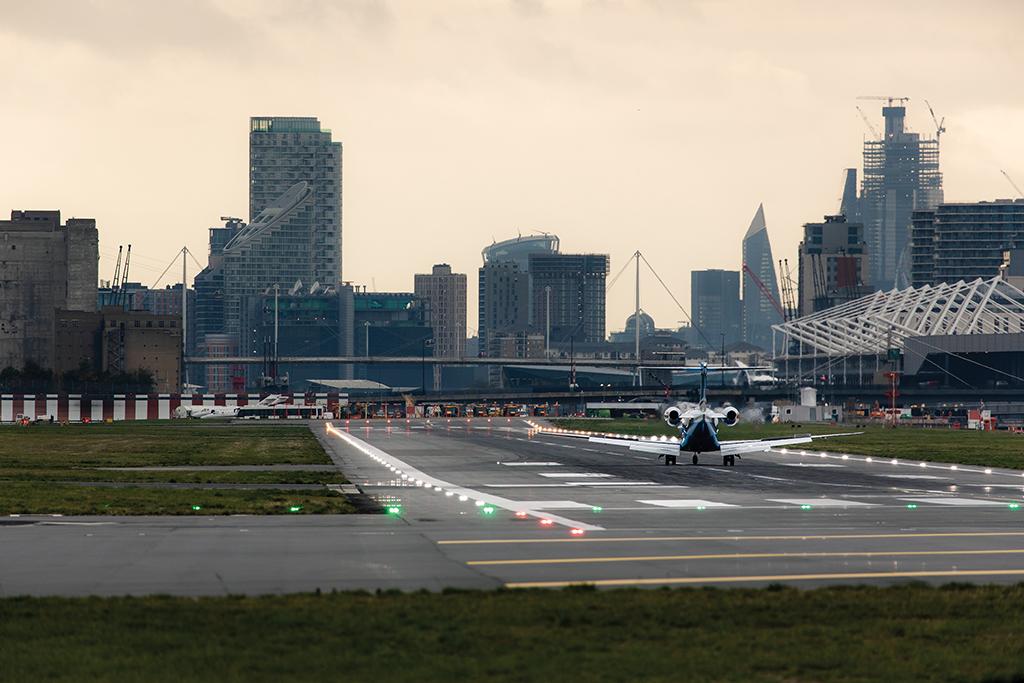
Most operators report average stage lengths of 1.5-2 hr. with block speeds close to 400 kt. They plan on climbing directly in the low to mid-forties and cruising at Mach 0.69-0.72, equivalent to 398-413 KTAS in ISA conditions. First-hour fuel flow is 1,100-1,200 pph, dropping to 900-1,000 pph for the second and subsequent hours.
While the aircraft can fly as far as 2,000 nm when slowed to Mach 0.65, most operators plan on limiting missions to 1,700-1,800 nm. Antoniadis uses even more conservative flight planning, usually capping missions at 1,400-1,500 nm. The consensus is that the PC-24 is a good 1,500-nm workhorse.
A few operators say they seldom push the aircraft to its maximum range limits because their passengers feel self-conscious using the forward lavatory with its multi-section folding forward and aft doors. Pilatus is evaluating an optional aft lavatory configuration. But such a design change would substantially reduce baggage capacity. And, when Pilatus offered the option to PC-12 operators, it never proved popular.
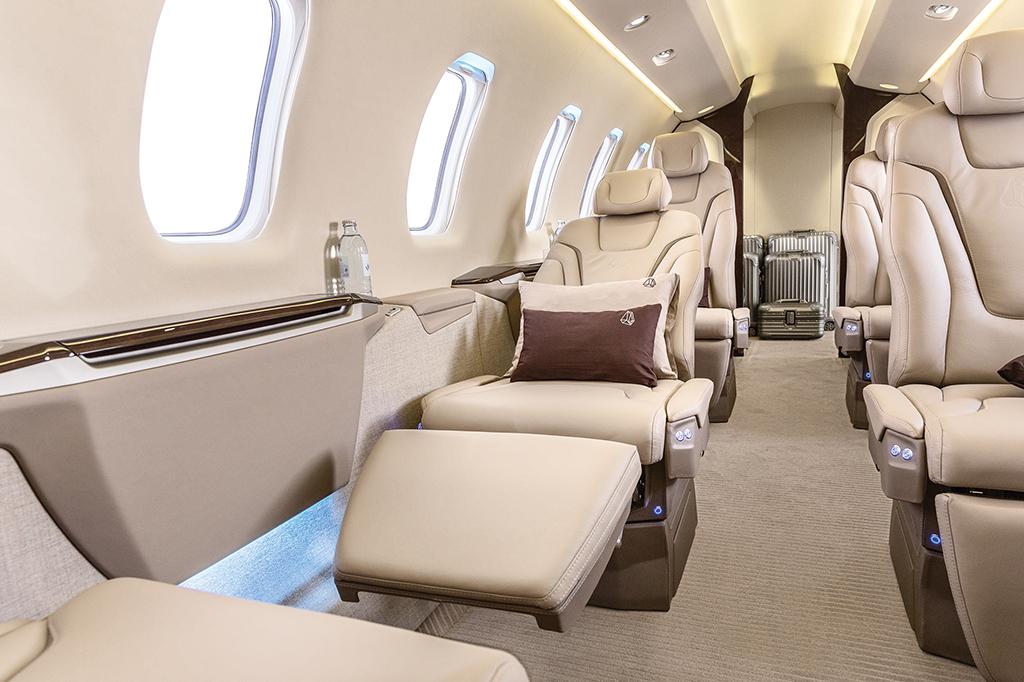
Five Favorite Features and Opportunities for Improvement
Operators found it difficult to limit themselves to only five favorite features of what Pilatus calls its “Super Versatile Jet.” Cabin environment topped the list, not only because of its 500-cu.-ft. volume, but also due to its flat floor and impressively low interior sound levels in cruise.
“The aircraft is very, very comfortable,” says Steve Cirino, U-Haul’s aviation department manager. The PC-24 is the firm’s largest aircraft; it also flies three Eclipse 500s and two PC-12s
The capacious baggage compartment, which is easy to load because of the aft cargo door and low floor level, is another favorite feature among operators. And passengers appreciate unrestricted access to their belongings. Operators say that while the aircraft comes with an aft tail stand, it has a wide CG range that allows them to carry heavy items in the aft bay. They also say it’s easy to load because of the relatively low baggage door sill height and the door’s large size.
Runway and climb performance are two more favorite features. As noted by Antoniadis of PlaneSense, this enables them to use runways that are too short for other light and medium jets and then climb to the aircraft’s 45,000-ft. certified ceiling on most missions, even on warm days.
Docile handling is yet one more favorite feature. “There’s no ‘coffin corner,’” the top point in the flight envelope where critical Mach number and stalling angle of attack might converge, says Tommy Suell, chief pilot for Steeleman Aviation in Las Vegas. “It’s a forgiving aircraft; it handles a lot like a PC-12. But thrust-wise, it’s a bit of a pig at [FL] 450.” Still, he loves the ability to use unpaved runways. He’s flown charters with the PC-24 between Las Vegas and the Burning Man festival in Nevada’s Black Rock Desert north of Reno, just as he does using the firm’s PC-12 aircraft.

The Advanced Cockpit Environment (ACE) flight deck, powered by Honeywell Epic 2 avionics, received praise, mostly from crews making the transition from the PC-12NG, which features Honeywell Apex equipment. The user interface is quite similar to that on Dassault’s EASy models, relying extensively on point, type and click entry conventions.
“It’s user-friendly and it’s robust,” says Todd Hotes, who flies s.n. 112 based at Oxford, Connecticut. Some operators commented that the Apex and ACE interfaces are quite different from Garmin designs and that it’s not easy making the transition between Honeywell and Garmin flight decks. However, as almost all ACE menus only are two layers deep, some operators believe that the Honeywell system is easier to use in everyday operations.
The quiet power mode (QPM) on the Williams International FJ44-4 turbofans enables one engine to function as an APU and is a well-received feature. In QPM, ground idle rpm is reduced by 8%, thereby reducing exterior sound levels significantly.
As is often the case with an all-new design, operators say that the PC-24 has opportunities for improvement. Besides the BAM Service Bulletins and recurring windshield problems, operators say the single-point pressure refueling (SPPR) system doesn’t accurately refill the tanks to the selected fuel quantity. It can be off by as much as 300 lb. In addition, they cannot preselect the refuel quantity from the flight deck; it only can be done from the outside refueling panel, forward of the right wing root. They would like the option to use either location.
Pilatus officials say SPPR will fill the aircraft within ±110 lb. of the preselected quantity, but line service technicians must follow published procedures and allow sufficient time for the fuel to settle in the tanks. Engineers in Stans, Switzerland, are “investigating software improvements to avoid such issues,” says Tom Aniello, vice president of marketing for Pilatus Business Aircraft.
The autothrottle system needs fine-tuning, according to operators. While it precisely holds programmed indicated airspeed at lower altitudes, it wanders off the preselected or programmed Mach speed by as much as Mach 0.03 at cruise altitude. This can result in the autothrottles pushing the aircraft over its Mach 0.74 redline.
“We have successfully tested autothrottle system improvements that will be announced soon,” Aniello responds.
Takeoff and landing data (TOLD), including V speeds, runway requirements and close-in climb performance, currently is computed using Pilatus’ proprietary Guru tablet computer app. Operators say they want the ACE FMS upgraded to support TOLD computations, freeing them of dependence on their tablet computers. Pilatus is evaluating the change.
The aircraft needs a full-service galley, some operators remarked. At last year’s NBAA annual convention, Pilatus Business Aircraft showed off a prototype forward galley that would replace the coat closet behind the pilot’s seat. It would be a 54.9-lb. option for $59,750, and include an ice chest and storage compartments. A coffee maker or pullout tray with 115-volt AC power outlet will be optional. A microwave oven also will be offered as an option.
Many operators praise Pilatus for its tip-to-tail Crystal Care maintenance and support program, which covers both engines and consumables. Some say they would not own the aircraft without it. But others complain that it’s too expensive. Pilatus officials counter that Crystal Care is the most comprehensive customer care program in business aviation and that’s why it’s pricey. It even pays for consumables, such as O-rings, LEDs and lubricants, along with AOG support and freight costs.
Crystal Care has both fixed and direct costs. An operator who flies 300 hr. per year, for instance, would pay $10,800 per month plus $550 per hour, according to Aniello. Notably, the hourly rate includes $353.26 for Williams TAP Blue engine maintenance, Aniello notes. Overall, the hourly cost for Crystal Care ranges from $1,300 per hour for low utilization operators to $828 per hour for high-time users.
“Crystal Care is really good and Pilatus has been very supportive in building up its support network,” says PlaneSense’s Antoniadis. Some other operators, though, say they’ve waited 48-72 hr. for replacement parts if they must be shipped from Switzerland. However, Pilatus Business Aircraft in Colorado now has considerably more complete spare inventories, officials say.
Operators also say they need a higher tanks-full payload. Typically equipped with stores and supplies and when flown with two pilots, the aircraft only can carry two passengers with full tanks. However, with a single pilot and BCA-spec equipment, it has a 715-lb. tanks-full payload. Aniello says Pilatus is evaluating several measures to increase tanks-full payload.
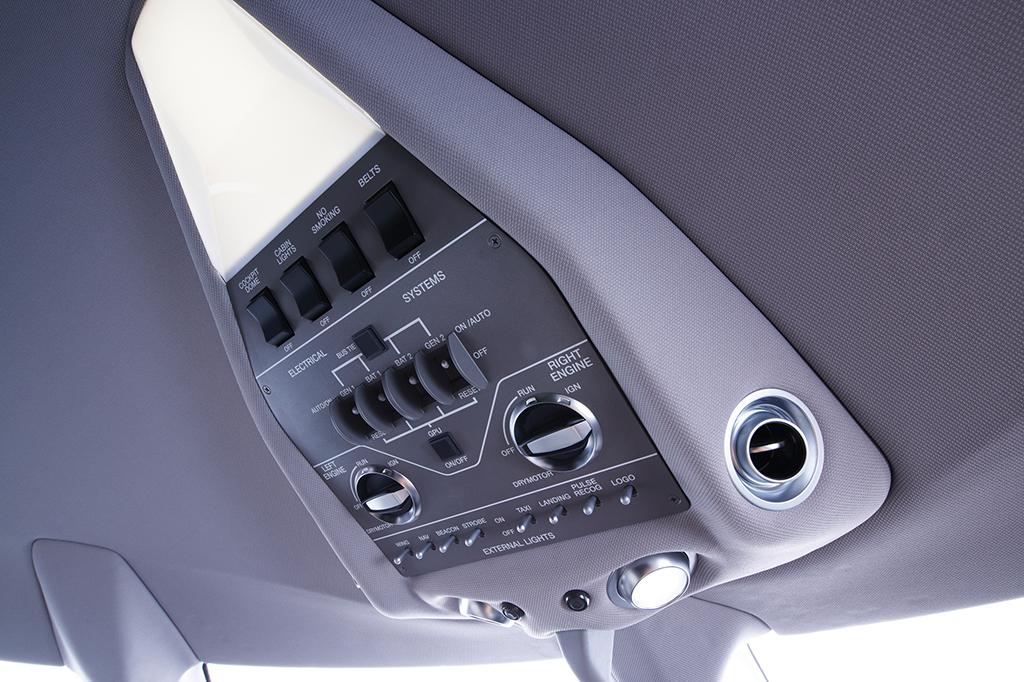
On Balance
Operators understand that all aircraft designs involve inevitable tradeoffs. The PC-24’s sweet spots are its capacious cabin, quiet interior and exceptional short-field performance, including approval to operate from unimproved runways. In exchange, it’s not the fastest cruising, longest range or highest payload aircraft in its class.
“At first, I was turned off by its slow speed. If you want high cruise speed, it’s not for you,” says U-Haul’s Cirino. “But it’s also the safest airplane I’ve ever flown, a dandy machine for owner/operators.”
“The PC-24 is the value driver in its class,” says Hotes.
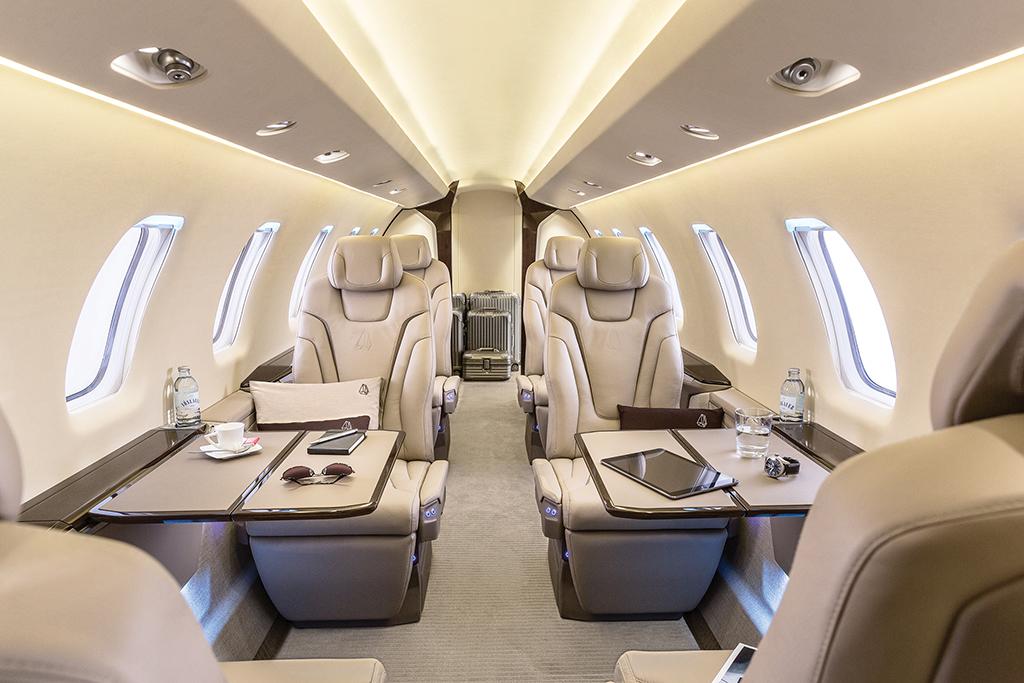
Growing pains notwithstanding, operators say dispatch reliability has been quite satisfactory. Steeleman’s Suell, for instance, says he’s only lost two charter flights in 18 months. That’s quite impressive, considering the PC-24 is the most sophisticated light to medium jet yet to enter service, considering its fully integrated ACE flight deck and utility management system, distributive data processing and electrical distribution networks, QPM and virtually all-electric systems architecture.
Customer loyalty is reflecting operator sentiment, Aniello says. Despite the plunge in sales suffered by other business aircraft manufacturers this year, the Pilatus PC-24 order book for 2020-21 has remained intact, he says.
The Swiss specialty aircraft company never has been one to accept the status quo. Most likely, PC-24 development and refinement will be an ongoing program at Pilatus, much the same as with the PC-12, which is now in its fourth generation. The PC-12NGX is a far more capable machine than the original model introduced in the mid-1990s and was also an unprecedented design.
As with the PC-12, operators say they expect the PC-24 to become considerably more capable as post-certification development continues. It’s off to a strong start and it can only get better.





